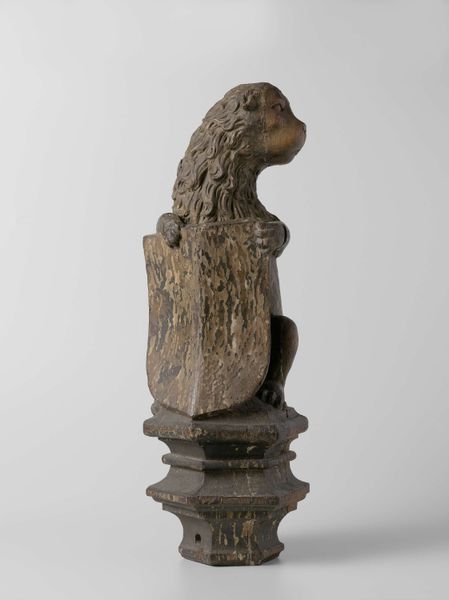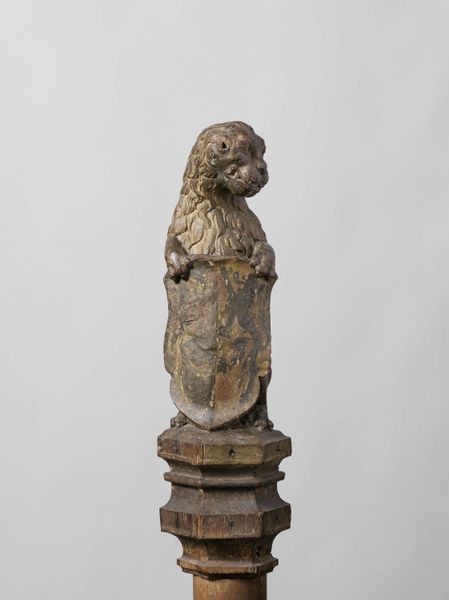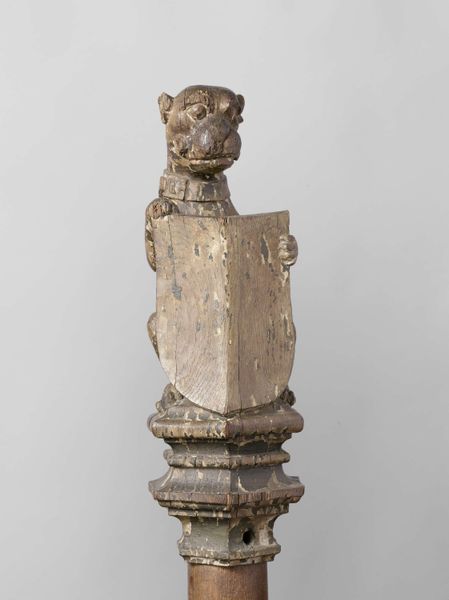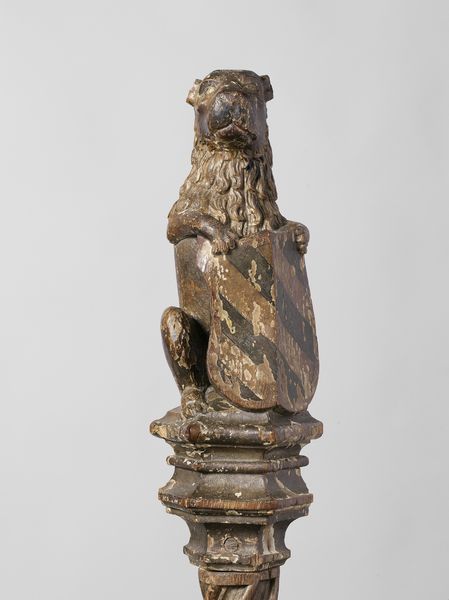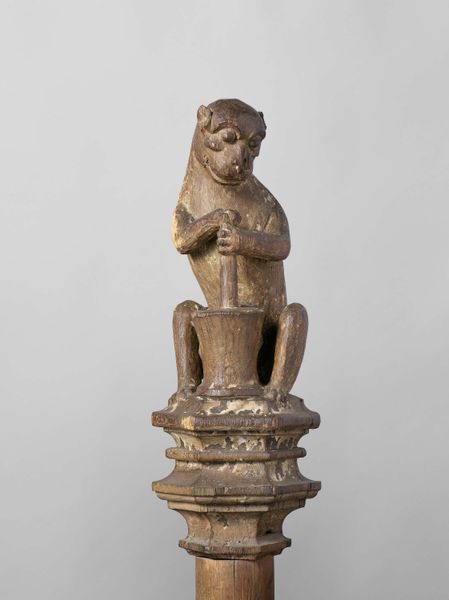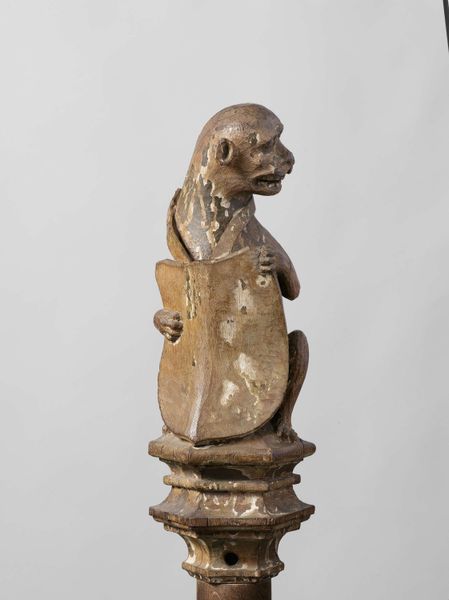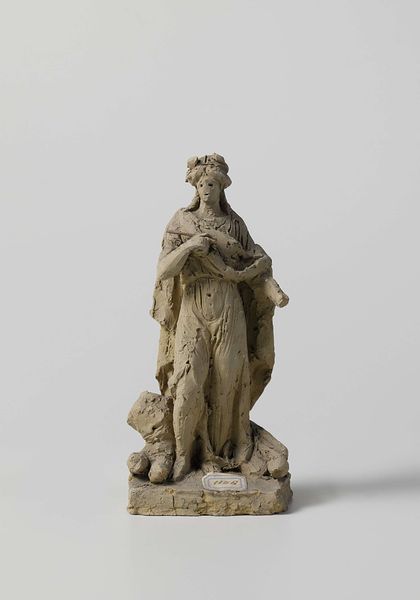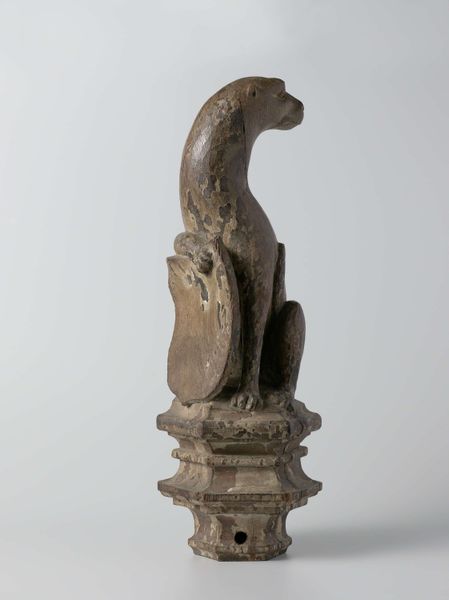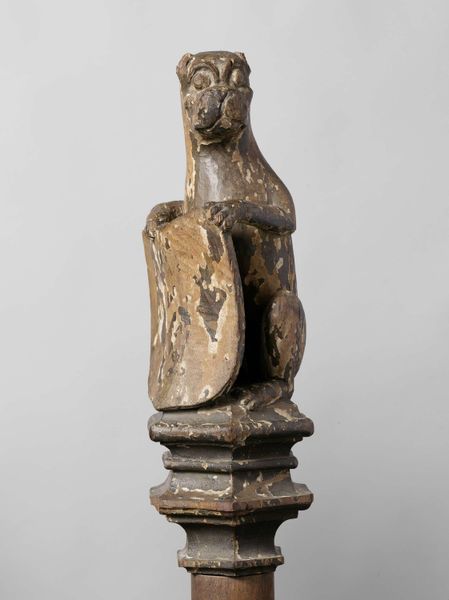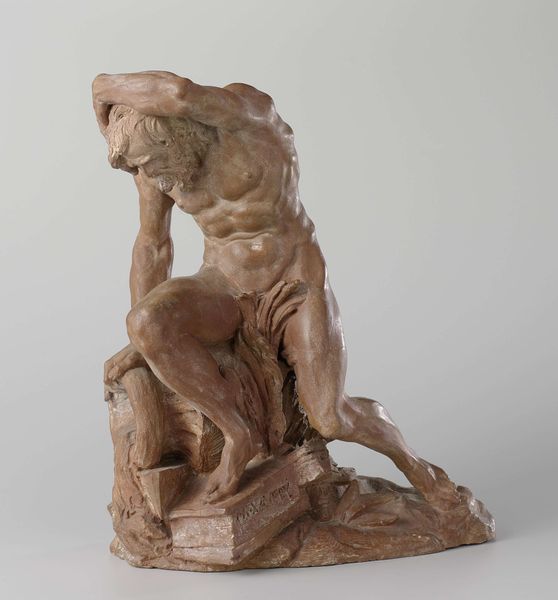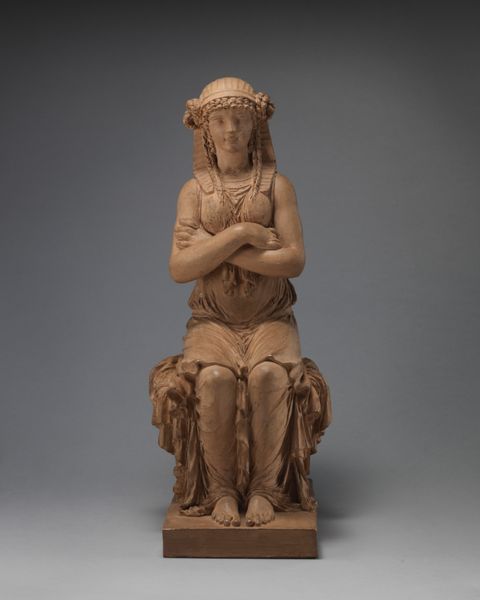
Lion Supporting an Escutcheon, from the Top of a Balustrade or the Backrest of the Stadholder’s Chair in the Rolzaal in the Hof van Holland, The Hague 1511 - 1515
0:00
0:00
sculpture, wood
#
medieval
#
sculpture
#
figuration
#
11_renaissance
#
sculpture
#
wood
#
statue
Dimensions: height 50.0 cm, width 18.5 cm, depth 17.0 cm
Copyright: Rijks Museum: Open Domain
Curator: Let’s explore this wooden sculpture attributed to Joost Janszoon, dating from 1511 to 1515: "Lion Supporting an Escutcheon, from the Top of a Balustrade or the Backrest of the Stadholder’s Chair in the Rolzaal in the Hof van Holland, The Hague." Quite a mouthful, isn't it? Editor: Indeed! My first thought is, that lion looks a bit… bemused. It has this charmingly awkward quality, as if it's not quite sure what it's doing holding that shield. Curator: That's perceptive. The roughness of the carving adds to that impression. Look at the lines of the mane—how they convey volume and texture without precise detail. It emphasizes form over naturalism, indicative of its period. It's clearly functional, though, meant to adorn architectural elements. The heraldic lion served a critical socio-political function, symbolizing authority. Editor: Absolutely. The choice of the lion itself is fascinating when contextualizing the time. This wasn’t merely decoration; it's asserting a particular ideology tied to Dutch identity. You can imagine how these images bolstered a nascent national identity. Where and how was this displayed, and what was its impact on public opinion? Curator: Exactly! In the Rolzaal of the Hof van Holland in The Hague, as part of a larger decorative scheme intended to express civic pride, a potent emblem of authority strategically situated within a critical space of governance, its repeated form intended to subtly impress on visiting officials their fealty to The Hague and their local history. Note how the posture and the placement create lines of sight which communicate up and out, elevating it literally as well as symbolically. Editor: You know, that shift in perspective from mere architectural ornament to intentional political display—is where this piece comes alive. The lion morphs from a sculpture into an ideological messenger. Curator: Precisely. Its material also is key, and one musn't forget the role wood and the woodworker would've been viewed in this time - so it adds to how one contextualizes status. Looking at it, the simple yet striking form indicates its context, as well as adding symbolic layers. Editor: I agree completely. Seeing beyond the surface allows us to appreciate the artistic and ideological depth imbued in even seemingly minor sculptures of this period. Curator: Yes, and that exploration really underscores why examining historical pieces like this can be so enlightening.
Comments
No comments
Be the first to comment and join the conversation on the ultimate creative platform.
